What Makes Learning Fun?
What Makes Learning Fun?
Principles for the Design of Intrinsically Motivating Museum Exhibits
Deborah L. Perry

A Division of
Rowman & Littlefield Publishers, Inc.
Lanham New York Toronto Plymouth, UK
Published by AltaMira Press
A division of Rowman & Littlefield Publishers, Inc.
A wholly owned subsidiary of The Rowman & Littlefield Publishing Group, Inc.
4501 Forbes Boulevard, Suite 200, Lanham, Maryland 20706
http://www.altamirapress.com
Estover Road, Plymouth PL6 7PY, United Kingdom
Copyright 2012 by AltaMira Press
All rights reserved . No part of this book may be reproduced in any form or by any electronic or mechanical means, including information storage and retrieval systems, without written permission from the publisher, except by a reviewer who may quote passages in a review.
British Library Cataloguing in Publication Information Available
Library of Congress Cataloging-in-Publication Data
Perry, Deborah L., 1952
What makes learning fun? : principles for the design of intrinsically motivating museum exhibits / Deborah Perry.
p. cm.
Includes bibliographical references and index.
ISBN 978-0-7591-0884-4 (cloth : alk. paper) ISBN 978-0-7591-0885-1 (pbk. : alk. paper) ISBN 978-0-7591-2128-7 (electronic)
1. Museum exhibitsPlanning. 2. MuseumsEducational aspects. I. Title.
AM151.P475 2012
069'.5dc23
2011039390
 The paper used in this publication meets the minimum requirements of American National Standard for Information SciencesPermanence of Paper for Printed Library Materials, ANSI/NISO Z39.48-1992.
The paper used in this publication meets the minimum requirements of American National Standard for Information SciencesPermanence of Paper for Printed Library Materials, ANSI/NISO Z39.48-1992.
Printed in the United States of America
To Allen Milbury,
for starting me on this journey
Introduction
Imagine the scenario: Theres an exhibit, a small unobtrusive unit in the middle of an interactive science gallery at a large childrens museum. In your role as volunteer and sometimes teacher of classes, you walk by it often, on your way to the gallery where you usually work. You are always impressed by the number of folks gathered aroundand it seems sort of surprising to you, given that its just a plain white box with some lights shining on it. But people are always busy making hand shadows and seem delightfully surprised when the shadows are brightly colored: red, green, yellow, purple, and pink. They laugh and point and ooh and aah. After a few brief moments, they move on.
One day, you stop briefly at the Parent Information sign that explains, Colors are subjective sensations that can be produced by light of a certain wavelength and by combinations of different wavelengths. The sensation of yellow can be produced by either light of a wavelength we call yellow or by a combination of more than one [wavelength]....
Hmmm, you say to yourself. Ill stop by later when I have some time, when Im not in such a rush, and itll make more sense then. You convince yourself that you are preoccupied and that all you need to do is read the labels and do the hands-on activities, and then youll get it. You repeat this scenario numerous times, and each time you stall while reading the labels, then convince yourself that all you need to do is spend a little more time with the exhibit.
Eventually that time arrives. You show up for work a half hour early with the intention of reading every label and doing every activity until you understand this exhibit that has this strange pull on you. You dutifully read the label What Is Going On. It shows three colored circles, one being blocked out by a hand, and carefully explains, Blue and green make cyan, and red and green make yellow . Wait a minute. From all your days messing around with paint and teaching arts and crafts, you know that red and green make brown, not yellow. And you know that yellow is a primary color, along with red and blue. But you also seem to remember having heard, someplace, somewhere, long ago, about mixing colors to make yellow.
You read the next label: What to Do and Notice. Okay, you think, this should do it. It will walk me through this step by step. You carefully do each of the four steps: 1. Place your hand over the white tabletop and notice the different colors made by your shadow. Okay, I can do this. 2. The three lights above the table are red, green, and blue. Notice that all three together make the table look white. Well, actually the table is white, and the lights make it have a pale pinky hue that changes slightly depending on where Im standing. But okay, Ill go along with you; it looks white. 3. If your hand blocks out all three colors then no light hits the table and your shadow is black. Okay, Im having a really hard time making a black shadow, and when I do, how do I know Im blocking out all three colors? It doesnt look like my hands blocking out the colors. Hmmm. Okay, Ill take it at its word. But what about the colored shadows? Where do they come from? Maybe the next step will make it clearer. 4. What colored shadows can you make by blocking different lights? You should see eight colors. Huh? I see different colors, but how come I have colored shadows? How am I making them? Aaargh! I still dont understand. At this point, you move back to the Parent Information sign, but it is pretty technical, all about wavelengths and subjective sensations.
Finally, you make it to the computer attached to the table. Maybe this will help. The title screen is called Colored Shadows and asks, How old are you? You decide not to be offended and dutifully enter your age: thirty-two. This gains you access to the next page, a menu of five items to choose from. You select What Is Going On; that is, after all, the big question youve been trying to figure out the answer to. This takes you to a screen explaining that when the red light is blocked out, white minus red equals blue plus green (or cyan). Huh? Again, you are confused. You wonder, How do I know when Im blocking out the red light? What does it mean that white minus red equals blue plus green? You do the rest of the computer items, and eventually you start to develop an understanding that, for example, red and green make yellow, but you still dont understand how this exhibit really demonstrates that; besides, this contradicts everything youve learned previously about red and green mixing.
Why cant you figure out this exhibit? Youve always thought you were a moderately smart person. You are, after all, working on a graduate degree, and youre in a childrens museum, for Petes sake.
You are starting to feel very inadequate, when it slowly dawns on you that it may not be you after all. Perhaps it is the exhibit design. Granted, its a very popular exhibit; visitors are constantly flocking around it, and it appears to be used more than any other exhibit in the gallery. Are those other visitors getting something you are missing? By now, of course, youre late for work, and you hurry off.
But the exhibit wont leave you alone. At unexpected moments, your experience keeps coming back to nudge you, to make you pay attention. How can an exhibit that is so popular and successful be so frustrating when youre trying to understand it? It gets you wondering what all those other visitors are getting out of it. Do they understand it? What are they learning?
A Journey
This is the story of the Colored Shadows exhibit and my journey to understand more about what makes exhibits work for visitors. It is the story of how I went about unpeeling the many layers that make up the exhibit design-and-development process to find out how to design an exhibit not just be popular with museum visitors but rather that will be popular and, simultaneously, educationally effective. In other words, this became my personal and professional journey to discover what makes learning fun.

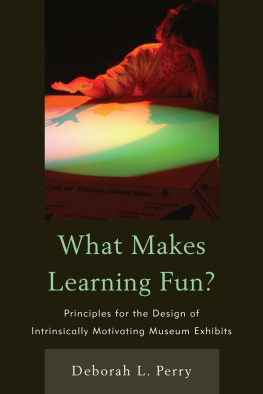
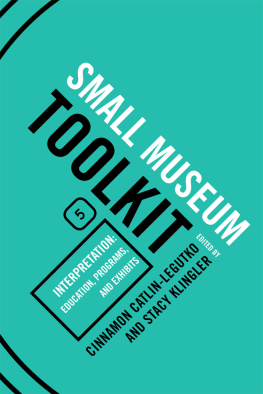

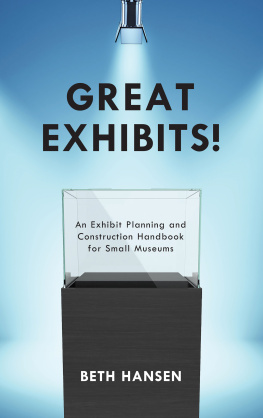

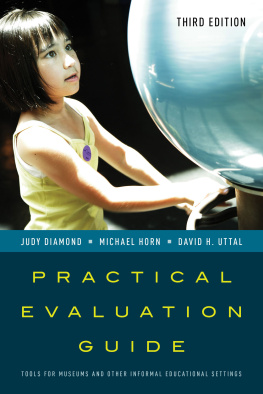
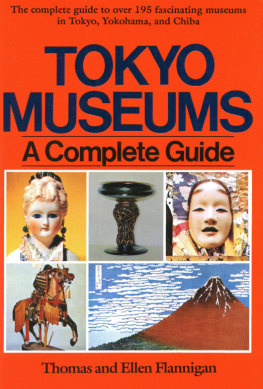
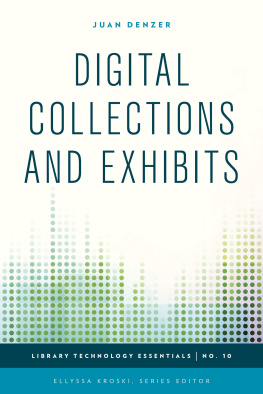


 The paper used in this publication meets the minimum requirements of American National Standard for Information SciencesPermanence of Paper for Printed Library Materials, ANSI/NISO Z39.48-1992.
The paper used in this publication meets the minimum requirements of American National Standard for Information SciencesPermanence of Paper for Printed Library Materials, ANSI/NISO Z39.48-1992.